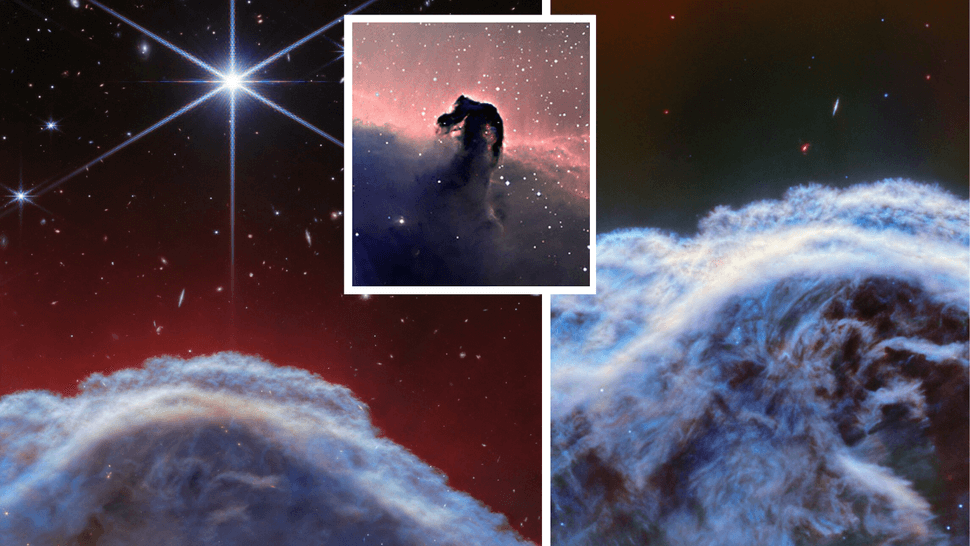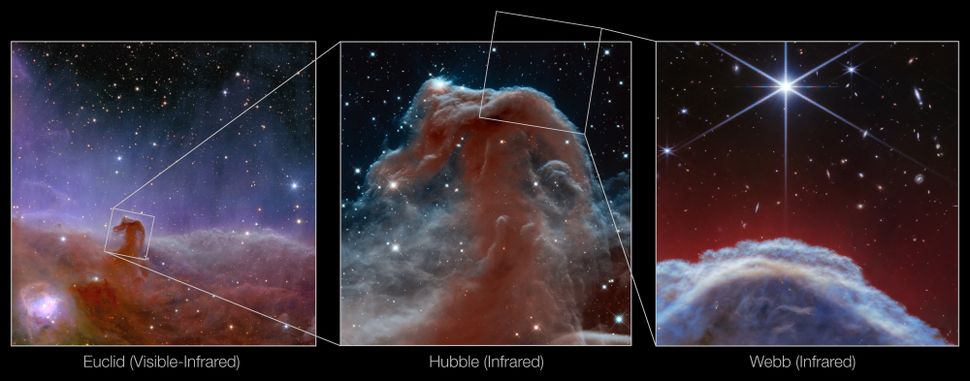The James Webb Space Telescope (JWST) has captured incredibly sharp images of the Horsehead Nebula, one of the most iconic celestial bodies in the sky over Earth.
The most powerful telescope ever placed into orbit around our planet, the JWST was able to see details of the Horsehead Nebula, also known as Barnard 33, that had never before been revealed, showing some regions in a completely new light.
The new images show the Horsehead Nebula as turbulent waves of gas rising from the western side of Orion B, a star-forming molecular cloud located 1,300 light-years from Earth in the constellation of Orion.
Related: James Webb Space Telescope discovers some early universe galaxies grew up surprisingly fast

The Horsehead Nebula is a collapsing cloud of dense, cool gas that is illuminated by a hot young star embedded in its top left edge. The horse-like structure that makes this nebula so distinctive has been created because lighter gas has been eroded. this has left a thick pillar of dense gas and dust that is harder to erode.
This won’t last forever, though. Scientists estimate that in around 5 million years, even this pillar of denser matter will be gone.

The JWST’s Near-InfraRed Camera (NIRCam) instrument was able to capture a small portion of the Horsehead Nebula close-up. This results in it appearing as a curved wall of thick, smoky gas and dust with distant stars and galaxies over it. Particularly evident is one large and bright star that shows the distinctive diffraction spikes associated with images created using the JWST.

The JWST’s other primary camera, the Mid-Infrared Instrument (MIRI) was also able to catch a stunning image of part of the Horsehead Nebula. A small portion of the nebula fills over half of this image with thick white and blue smoke punctuated by dark voids.

The Horsehead Nebula is a photon-dominated region (PDR), an area of space where young massive stars warm up the gas and dust between stars. These cold clouds exist between hotter ionized gas closer to the newborn stars. In PDRs, these stars impact the chemistry of this gas and dust with their ultraviolet light emissions. PDRs are found between stars where gas is dense enough to resist ionization but is still not too dense to allow ultraviolet light to pass through it.
Studying the light from PDRs allows scientists to study how interstellar matter evolves and the chemical processes that define this evolution.
The fact that the Horsehead Nebula is relatively close to Earth means that it is the ideal PDR for astronomers to use in conducting these investigations, determining the structure of PDRs, and studying the interactions of radiation and chemistry in interstellar space. These images show that the JWST is poised to make an impact in this investigation.
The results of the JWST’s investigation of the Horsehead Nebula have been accepted for publication in the journal Astronomy & Astrophysics.





